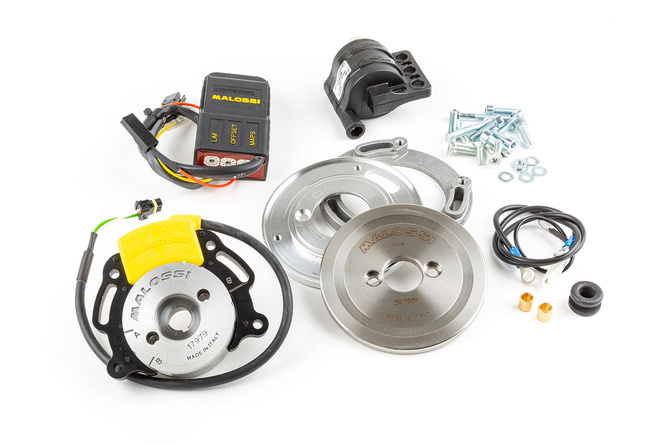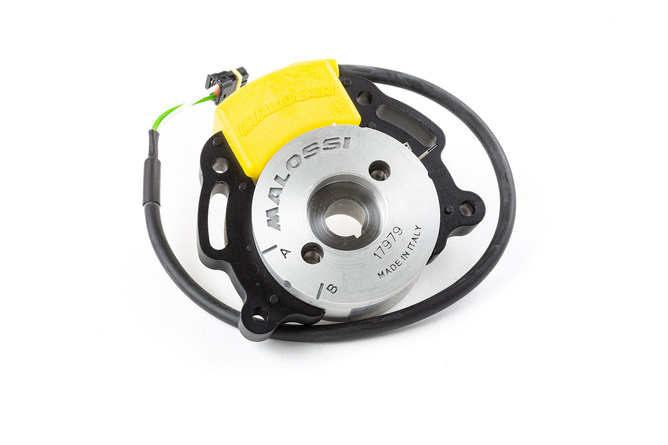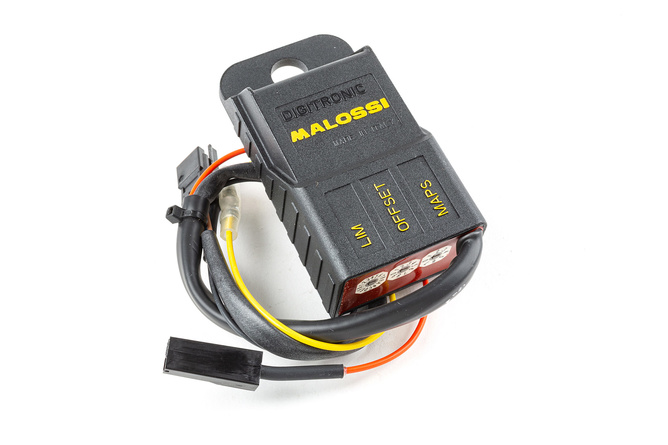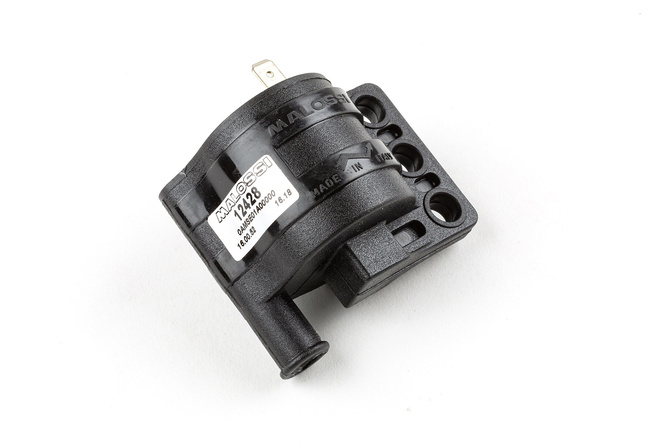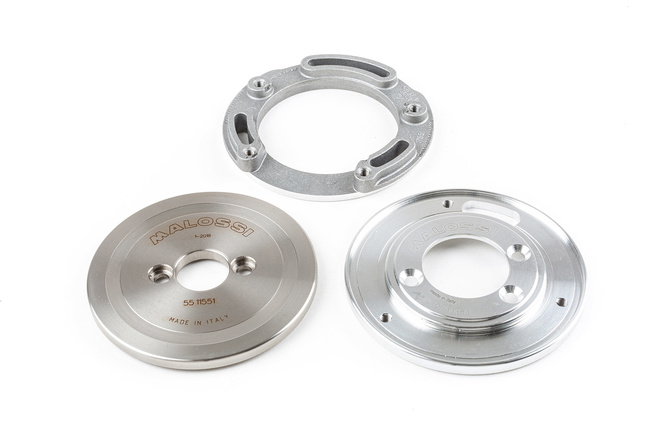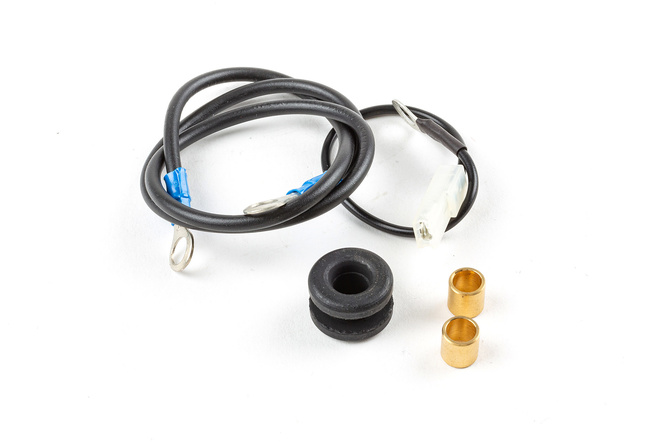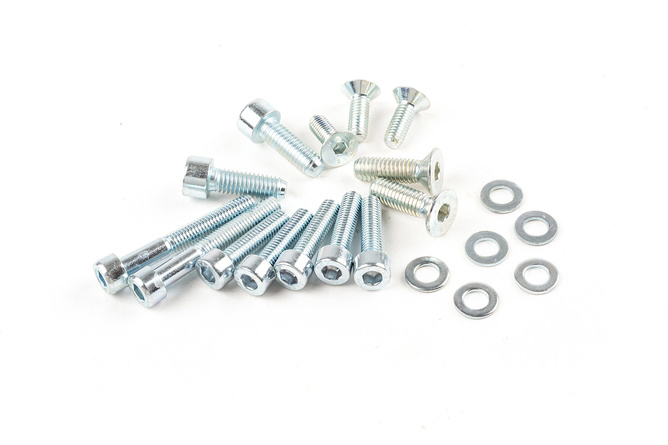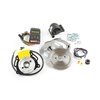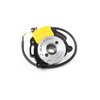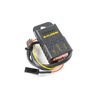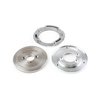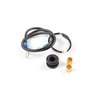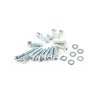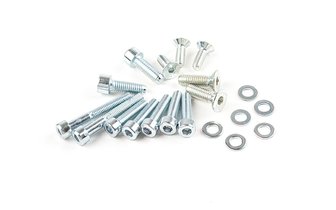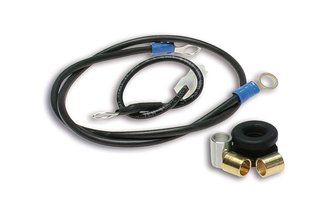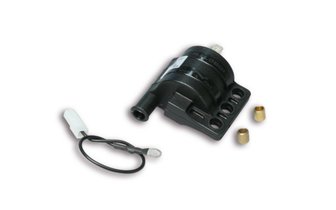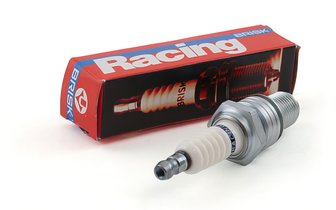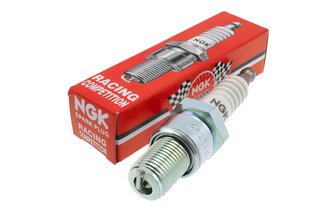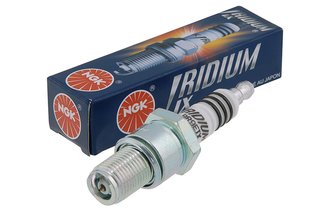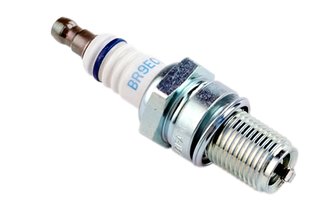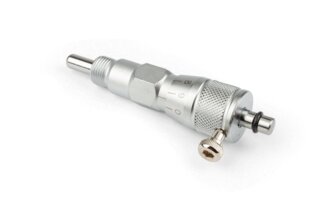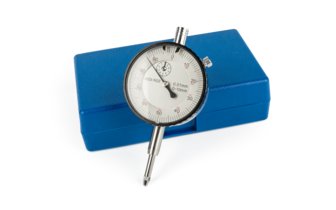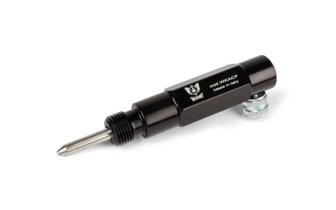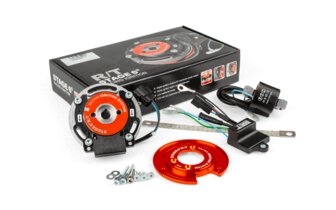Description
Malossi MHR Team internal rotor ignition for Piaggio
Inner Rotor Ignition Malossi MHR TEAM II for Piaggio LC (Piaggio NRG / Zip etc.).
Malossi racing ignition
Malossi's MHR Team 2 ignition is a high-performance ignition that combines state-of-the-art modern technologies with the long-term know-how and race experience Malossi acquired over many years. Malossi is addressing some long-running problems tuners had to deal with in older racing ignitions.
Variable adjustable ignition from Malossi MHR
This high-end ignition allows for not only switching between several curves but also for adjusting a chosen ignition curve by + / - 2° with a simple click.The new CDI is now even more immune to interferences and is equipped with a microprocessor based on uP STM8 - 8 bits with more than 20 MIPS (millions of instructions per second) processor speed; spark timing is much more accurate than with the previous versions.
The CDI included with the MHR Team 2 ignition allows for variable ignition timing. Ignition is timed according to engine speed (rpm) to ensure optimum performance.
Main Settings Malossi MHR internal rotor ignition
- MAPS: map selection
- OFFSET: modify selected curve by + ou – 2° (0.5° tolerance)
- LIM: aimed at 4-stroke engines - adjust rev limiter (11.500 à 14.300 rpm) or deactivates rev limiter altogether, 16 positions
You can choose from 8 pre-set ignition curves:
- 2-stroke engine: 6 preset curves for advancing ignition timing
- 4-stroke engine: 1 preset curve for advancing ignition timing
- universal setting: 1 fixed curve
Improvements Malossi MHR Team 2 Racing ignition
Malossi overhauled the entire ignition and went for first-rate components only. The new high-voltage coil has a maximum discharge of 40 KV for speeds over 3,000 rpm and a sensational ramp up period of @10bar> 1750 V/uS. Also new and improved - the rotor / stator assy which were both redesigned and are now even more stable and efficient; on a mechanical and electronic level, rotor and stator now work even better together.
Electrical performance of this redesigned ignition is now 20% improved, minimum starting rpm has been reduced from 450rpm to 370rpm, the stator is 30% lighter (- 100g).
High-end ignition for tuning and racing
If you're wondering if this high-end ignition is really worth it, we have to respond with a resounding yes - if you are seriously into tuning / racing. The increased voltage for the ignition spark at lower rpms will give you the edge you need to win the race.
Inner Rotor Ignition
An internal rotor ignition is a racing ignition designed to increase performance. Inner rotor ignitions are designed for motorsports and competition, in rare cases they also provide power for vehicle lighting. (e.g. the MVT ignition).
Advantages of an internal rotor ignition
Inner rotor ignitions are the ultimate choice for the race track, they are however not really suitable for street use.
The compact and lightweight internal rotor puts less weight on the crankshaft and allows for quick revving, very high engine speeds and an enormous power increase at high rpm.
Another advantage is that this type of ignition is less susceptible to moisture than standard ignitions.
Tip: You may want to consider a tuning ignition cover with additional holes / cutouts to improve ventilation.
Disadvantages of an internal rotor ignition
RPMs increase faster due to the lower mass, this will affect torque at low RPMs, though. Therefore, internal rotor ignitions are only worthwhile for racing, because on the racetrack you'll constantly stay at high engine speeds.
Installing and adjusting an internal rotor ignition
Installing an internal rotor ignition requires technical knowledge and careful adjustments to keep the engine running optimally and really optimize performance. We recommend our tutorial to learn how to install and adjust an internal rotor ignition.
| Inner Rotor Ignition Malossi MHR TEAM 2 Piaggio LC | |
|---|---|
| Article no. | M5517975 |
| Weight | 1,52 kg |
| Series | MHR TEAM |
| Brand | Malossi |
| Product type | Inner rotor ignition |
| Ignition type | Digital |
| Power supply lighting | Without power supply |
